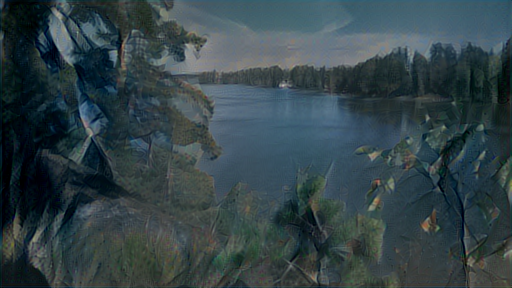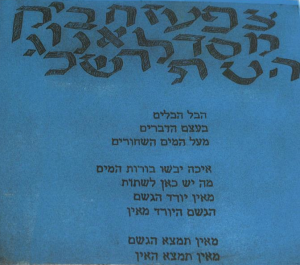In August 2012 I was almost ready with my Ph.D. thesis. The preliminary reviews had been quite positive. I was content and confident about my research as well as about the thesis in its written form. Then the reality of the formalities in waiting struck me. It was not at all easy to find out exactly how the process would go, what exactly was required and how to proceed with everything. Still, the goal was to defend the thesis before the end of the year. I was close to giving up, to release my work in internet and forget about it.
The anxiety of this situation found expression in a song that I wrote in Hebrew. Actually the text consists of phrases and allusions rather than being really original. Even if I am not fluent in Hebrew, Hebrew was a natural choice for this song, as my thesis was essentially an analysis of a medieval Hebrew work from early 12th century.
The practical difficulties then got sorted out and I managed to defend my thesis in December, 2012. Still, the song remained, and found its first visual form in a graphic print by Saara Mesterton and Johanna Töyrylä. The print contains, in the upper part, a cloud of Hebrew letters, in a somewhat chaotic arrangement, alluding to the chaotic state in the beginning of creation. The creation of what? Myths as well as mystical thought often refer to chaos as the early phase in the creation of the world. But every creative person will probably agree to that human creativity, too, must go through a phase of chaos.
Then the lower part of the print contains my small Hebrew poem. Vanity of vanities, in the heart of matters, above the dark waters. How did the well dry up like this? What is there to drink? From where will the rain ever come? The rain from the nothingness. From where can you find the rain? From where can you find the nothingness?
(The English translation misses the ambiguities and allusions in the original Hebrew, where for instance me-ayin can mean both from where and from nothingness, a fact that has been used in the interpretations of Job 28:12.)
The song itself existed in two versions, both recorded in August 2012. Aside of the Hebrew version, I recorded it also in colloquial Finnish with a flavor of Meänkieli. The text of this version, Turhuuksitten turhuus, has been published in Meänmaa Aviisi 03/2012.
I had for a long time been thinking of making a video of the song. I had collected materials and I had shot some video as material. But it took more than three years before I suddenly felt now is a suitable time to make this video. The video was cut using the original Hebrew version of the song.
Although the video contains, aside from the newer materials, also photographs taken by Johanna Töyrylä in 2007, in the middle of my 12 year journey with my research, it is not a documentary of the research. Neither does it show the end of the journey, the succesful defence of the thesis and the subsequent publishing of the work, after some further difficulties, by a major international publisher in humanities. The video focuses in what the song is about, the situation in August 2012.
When the video was ready I tried it with the Finnish/Meänkieli version of the song, too. The lines of the text are longer than in Hebrew, giving the song a different feel. And thus, the cuts in the video may not match the song as well as with the Hebrew sound. But like in the case of Bengt Pohjanen’s Escaping Poems, there is value in translation, even to obscure languages. Translation may uncover new meanings while other meanings may move into the background. New arrangements may emerge in the chaos of creation. So I will include also this version.




